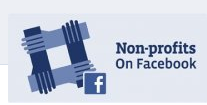
Note from Beth: For those of you who have been following my blog for a long time, you know of my obsession with research reports, particularly social media research snippets. The good folks at Idealware offered me a sneak peak of their new Facebook research – how could I resist? Charts, graphics, analytics, metrics, and data are like crack to me …
A guest post by Kyle Andrei, Idealware
Who’s seeing success with their Facebook page? In February, Idealware distributed a survey (thorough an informal email outreach) to over 500 nonprofit professionals who were using Facebook at their organizations. Well, the data is back, and we thought we’d share some of our most important findingsósuccess!
Well, specifically, how successful people were in attracting new constituents. We asked survey respondents whether or not they felt they had attracted new constituents (donors, members, volunteers, clients, or event attendees) through their Facebook page. And people did indeed see successful results.

The percentage of respondents who said they they’d seen “a few” or “substantial” new constituents of that type, who also said that attracting that type of constituent was important to them.
Nonprofits felt that Facebook was working best for them in attracting event attendees. Given Facebook’s Events app, this information isn’t terribly surprising. It’s a simple matter to create your event on Facebook, distribute it to your fans, and let them distribute the invitation to their friends.
People didn’t see as much success with new donors and volunteers, though. Why is that? Are Facebook relationships too casual to warrant giving time or money to an organization? Or are potential donors or volunteers not on Facebook in the same numbers?
In addition to constituent impact, we also asked respondents about what we call “measured results,” those goals that don’t directly involve constituents, and can be easily quantified. These included website traffic, donations, email list size, and moving people to action (advocacy actions).

The percentage of respondents who said they they’d seen “some” or “substantial” effect that they would attribute to Facebook. The percentage of “Moved People to Take Action” and “Increased Donations” are out of those organization who said those actions were important to them, while “Increased Website Traffic” and “Increased Donation” are based on all respondents.
Respondents reported the most success with using Facebook to direct new people to their websites, with more than 75% saying they’ve seen an increase in web traffic. With free web analytics tools like Google Analytics, tracking who followed your link from your Facebook page is one of the most measurable goals included in this survey.
And more than 65% said that they’d had some success with moving people to take some form of action for a cause, like signing petitions or other advocacy actions. Online petitions and other political or advocacy actions are easy to do, demand little time, and are easily spread through Facebook and other social media.
Following in suit from the constituent impact, donations saw little success; less than 30% saw success. Surprisingly, respondents didn’t have a huge amount of success with increasing their email lists via Facebook either ñ only 42% saw results. Maybe people aren’t including links or widgets to allow their fans to sign up, or like one person mentioned, fans may prefer to be contacted through Facebook messages and updates, instead of through email.
We’re continuing to analyze the data, and are conducting a series of interviews to round them out. Stay tune for more information and a (free!) research report from Idealware in May.
Kyle is the research intern at Idealware, and a senior at Indiana State University, where he studies Communication. Idealware, a 501(c)(3) nonprofit, provides thoroughly researched, impartial and accessible resources about software to help nonprofits make smart software decisions.
